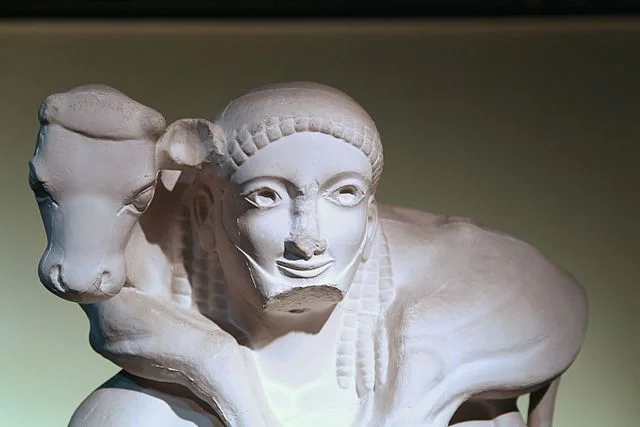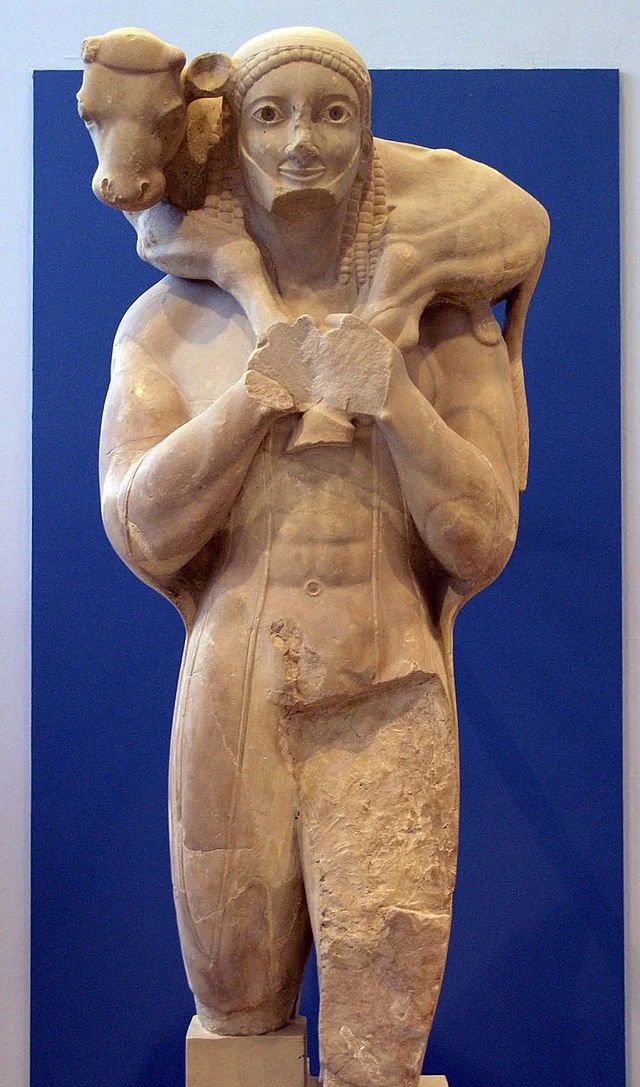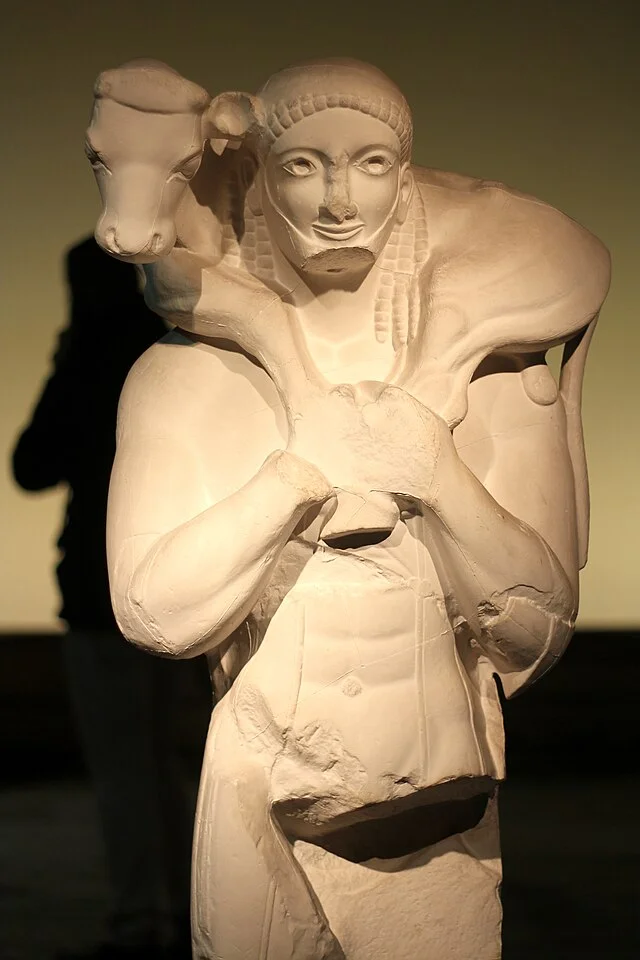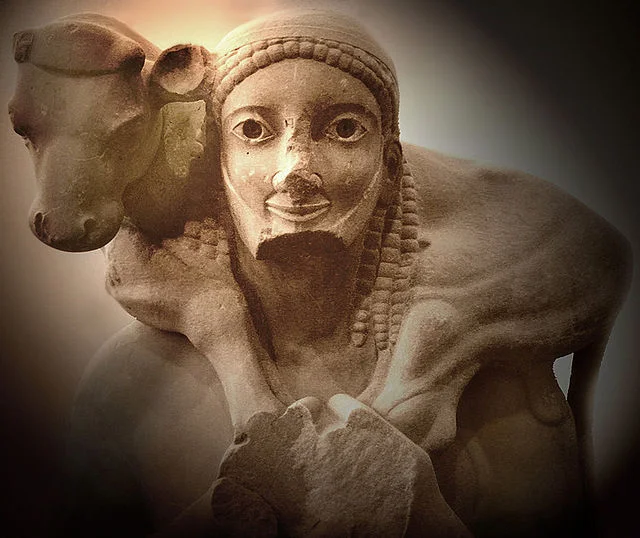The Moschophoros, or “Calf-Bearer,” is a renowned ancient Greek sculpture. It was discovered on the Acropolis of Athens in 1864. The statue dates back to around 570 BC, during the Archaic period of Greek art. This period was known for its distinctive style, featuring figures with rigid postures and the famous “Archaic smile.”
Get your dose of History via Email
Description of the Moschophoros

The Moschophoros depicts a man carrying a young calf on his shoulders. The figure wears a cloak, or himation, draped around his body. His hair is long, a typical feature of statues from this period, and the facial expression shows the characteristic Archaic smile. This smile is believed to represent the statue’s attempt to convey life.
The statue is made from marble, a common material used in Greek sculpture during this time. It stands 1.65 meters tall, with much of its original structure intact despite damage over the centuries. The calf is shown looking outward, while the man’s hands hold its legs firmly.
The Purpose of the Moschophoros

The Moschophoros was likely a votive offering to the goddess Athena. This theory is based on its discovery at the Acropolis, a religious and cultural center dedicated to the goddess. The act of carrying a calf symbolizes a sacrifice to the gods, a common practice in ancient Greek religion.
Votive offerings were made by individuals seeking favor from the gods or as expressions of gratitude. The inscription found on the statue, though partially damaged, identifies the donor as Rhonbos. He may have commissioned the statue to honor Athena and gain her favor.
Style and Influence

The Moschophoros reflects key aspects of Archaic Greek sculpture. The rigid posture, symmetrical composition, and idealized anatomy were common features of this period. The Archaic smile, seen on many statues from this time, contrasts with later Classical sculptures, which emphasized naturalism and movement.
The Moschophoros also shows the influence of Eastern Mediterranean cultures. The style of the cloak, hair, and the combination of human and animal figures can be traced to earlier Near Eastern art. This cross-cultural exchange was typical of the Archaic period, as Greek cities engaged in trade and interaction with surrounding regions.
Archaeological Significance

The discovery of the Moschophoros was a significant archaeological find. It shed light on the religious practices of ancient Athens and contributed to the understanding of Archaic Greek art. The statue, along with other discoveries from the Acropolis, provides valuable insight into the cultural and religious life of the city during this period.
Today, the Moschophoros is displayed in the Acropolis Museum in Athens. Its condition, though incomplete, allows modern viewers to appreciate the artistic skill and religious significance of Archaic Greek sculpture. This statue remains an important example of early Greek votive art, bridging the gap between the stylized forms of the Archaic period and the naturalism of later Classical works.
Conclusion
The Moschophoros is more than a simple statue; it represents the intersection of art, religion, and culture in ancient Greece. As a votive offering, it illustrates the importance of religious devotion in Athenian society. As a work of art, it reflects the stylistic trends of the Archaic period, while also highlighting the broader cultural influences shaping early Greek sculpture. Its discovery and preservation continue to contribute to the study of ancient Greek art and religious practice.
Source:

